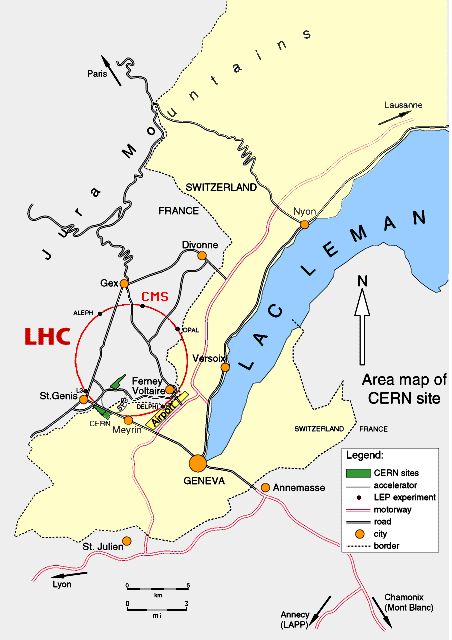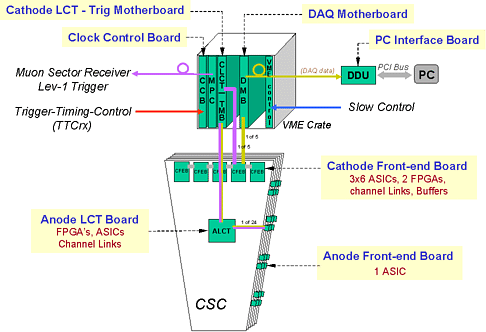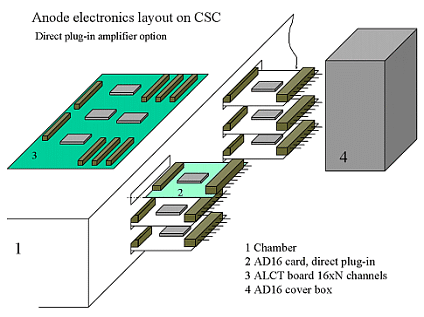![]() The Carnegie Mellon University High Energy Colliding Beams Physics
group is currently building electronics components for the CMS
detector. The Compact Muon Solenoid (CMS) detector
(CMS general view)
is a large, multi-purpose facility which is to be installed
at one of the interaction points of the Large Hadron Collider (LHC)
accelerator at CERN, near Geneva, Switzerland. The LHC will be a
proton-proton colliding beam machine, with a center-of-mass energy of
14 TeV and a peak luminosity of 10**34 cm**-2 s**-1. It will be situated in
a 26 km circumference circular tunnel, currently occupied
by the Large Electron-Positron (LEP) accelerator
(LHC map).
Four large experiments, including CMS, will be
positioned at different points around the accelerator, where the
counter-rotating beams of protons will collide with each other
(LHC crossing points).
These collisions will have over 7 times more energy than any other
accelerator in the world and will provide us with an opportunity to
discover entire new families of particles.
The Carnegie Mellon University High Energy Colliding Beams Physics
group is currently building electronics components for the CMS
detector. The Compact Muon Solenoid (CMS) detector
(CMS general view)
is a large, multi-purpose facility which is to be installed
at one of the interaction points of the Large Hadron Collider (LHC)
accelerator at CERN, near Geneva, Switzerland. The LHC will be a
proton-proton colliding beam machine, with a center-of-mass energy of
14 TeV and a peak luminosity of 10**34 cm**-2 s**-1. It will be situated in
a 26 km circumference circular tunnel, currently occupied
by the Large Electron-Positron (LEP) accelerator
(LHC map).
Four large experiments, including CMS, will be
positioned at different points around the accelerator, where the
counter-rotating beams of protons will collide with each other
(LHC crossing points).
These collisions will have over 7 times more energy than any other
accelerator in the world and will provide us with an opportunity to
discover entire new families of particles.


